Linchen Zhu
FastCorrect 2: Fast Error Correction on Multiple Candidates for Automatic Speech Recognition
Oct 18, 2021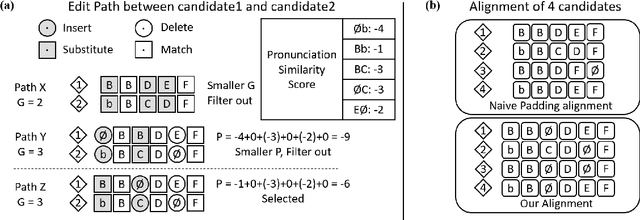
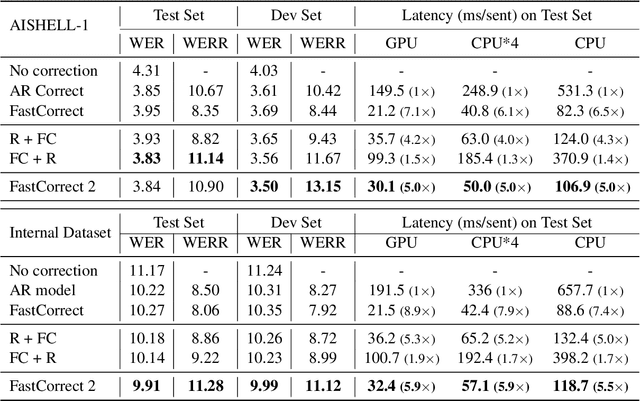
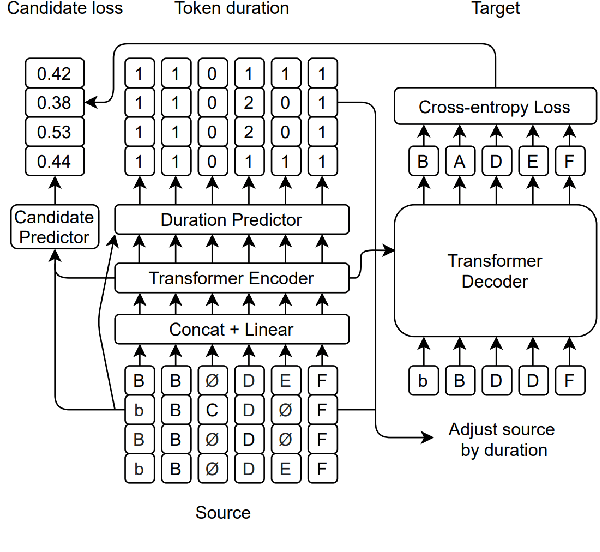
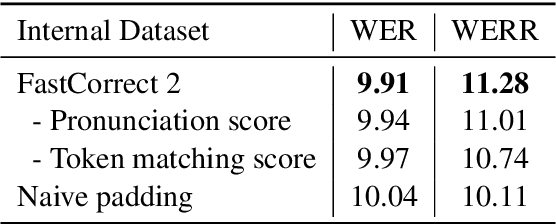
Abstract:Error correction is widely used in automatic speech recognition (ASR) to post-process the generated sentence, and can further reduce the word error rate (WER). Although multiple candidates are generated by an ASR system through beam search, current error correction approaches can only correct one sentence at a time, failing to leverage the voting effect from multiple candidates to better detect and correct error tokens. In this work, we propose FastCorrect 2, an error correction model that takes multiple ASR candidates as input for better correction accuracy. FastCorrect 2 adopts non-autoregressive generation for fast inference, which consists of an encoder that processes multiple source sentences and a decoder that generates the target sentence in parallel from the adjusted source sentence, where the adjustment is based on the predicted duration of each source token. However, there are some issues when handling multiple source sentences. First, it is non-trivial to leverage the voting effect from multiple source sentences since they usually vary in length. Thus, we propose a novel alignment algorithm to maximize the degree of token alignment among multiple sentences in terms of token and pronunciation similarity. Second, the decoder can only take one adjusted source sentence as input, while there are multiple source sentences. Thus, we develop a candidate predictor to detect the most suitable candidate for the decoder. Experiments on our inhouse dataset and AISHELL-1 show that FastCorrect 2 can further reduce the WER over the previous correction model with single candidate by 3.2% and 2.6%, demonstrating the effectiveness of leveraging multiple candidates in ASR error correction. FastCorrect 2 achieves better performance than the cascaded re-scoring and correction pipeline and can serve as a unified post-processing module for ASR.
FastCorrect: Fast Error Correction with Edit Alignment for Automatic Speech Recognition
Jun 03, 2021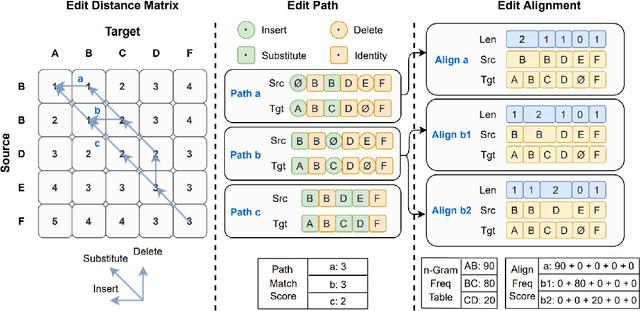
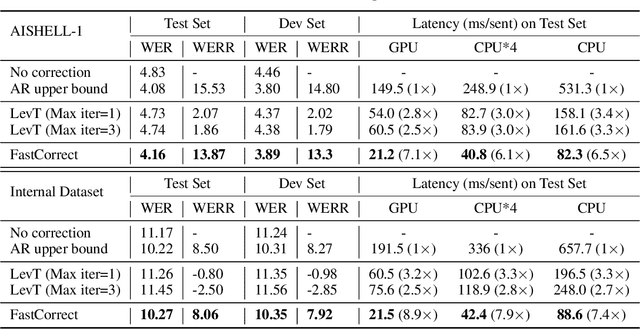
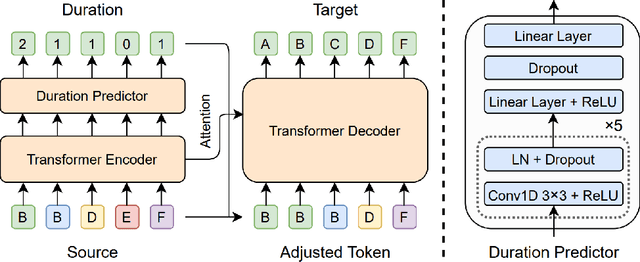
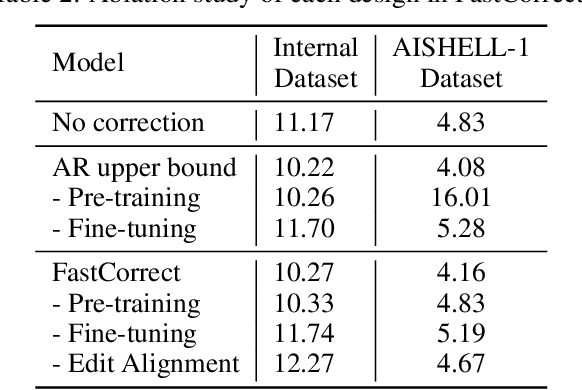
Abstract:Error correction techniques have been used to refine the output sentences from automatic speech recognition (ASR) models and achieve a lower word error rate (WER) than original ASR outputs. Previous works usually use a sequence-to-sequence model to correct an ASR output sentence autoregressively, which causes large latency and cannot be deployed in online ASR services. A straightforward solution to reduce latency, inspired by non-autoregressive (NAR) neural machine translation, is to use an NAR sequence generation model for ASR error correction, which, however, comes at the cost of significantly increased ASR error rate. In this paper, observing distinctive error patterns and correction operations (i.e., insertion, deletion, and substitution) in ASR, we propose FastCorrect, a novel NAR error correction model based on edit alignment. In training, FastCorrect aligns each source token from an ASR output sentence to the target tokens from the corresponding ground-truth sentence based on the edit distance between the source and target sentences, and extracts the number of target tokens corresponding to each source token during edition/correction, which is then used to train a length predictor and to adjust the source tokens to match the length of the target sentence for parallel generation. In inference, the token number predicted by the length predictor is used to adjust the source tokens for target sequence generation. Experiments on the public AISHELL-1 dataset and an internal industrial-scale ASR dataset show the effectiveness of FastCorrect for ASR error correction: 1) it speeds up the inference by 6-9 times and maintains the accuracy (8-14% WER reduction) compared with the autoregressive correction model; and 2) it outperforms the popular NAR models adopted in neural machine translation and text edition by a large margin.
 Add to Chrome
Add to Chrome Add to Firefox
Add to Firefox Add to Edge
Add to Edge